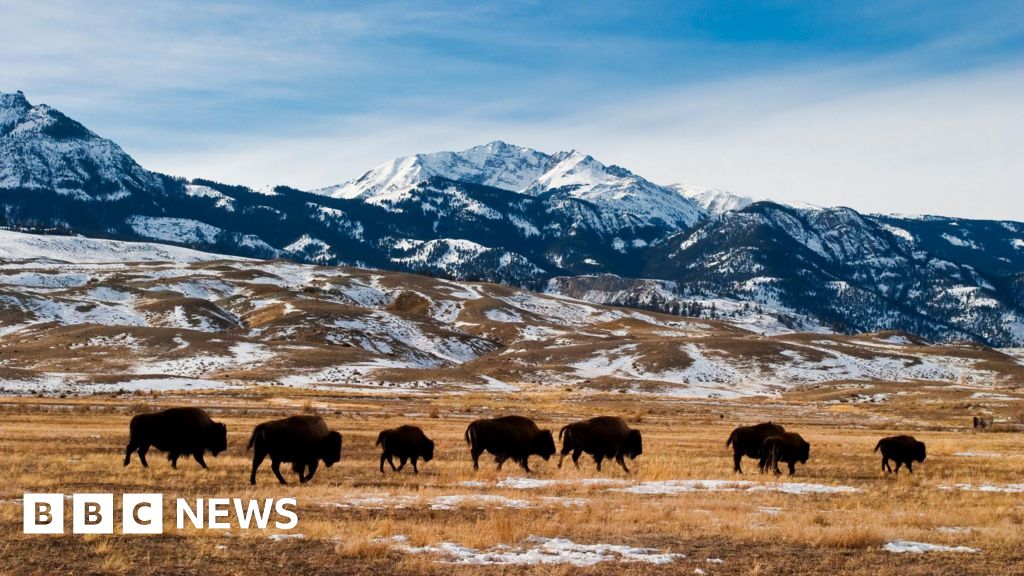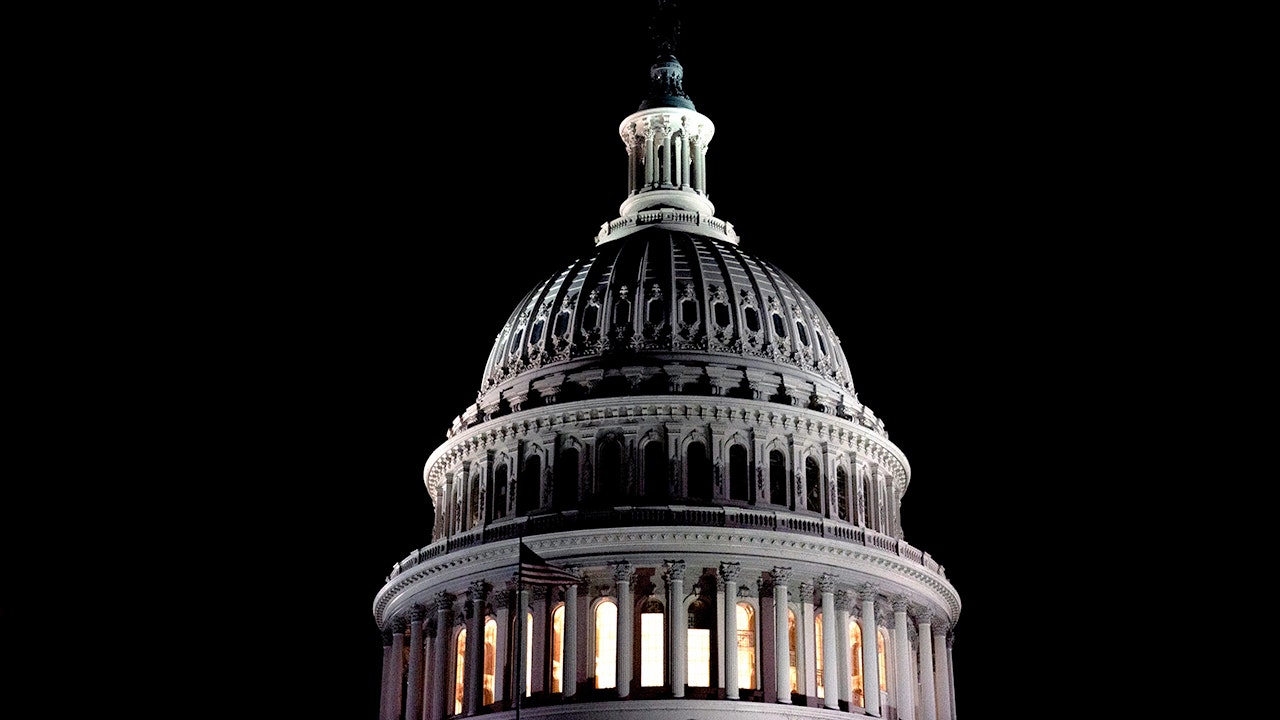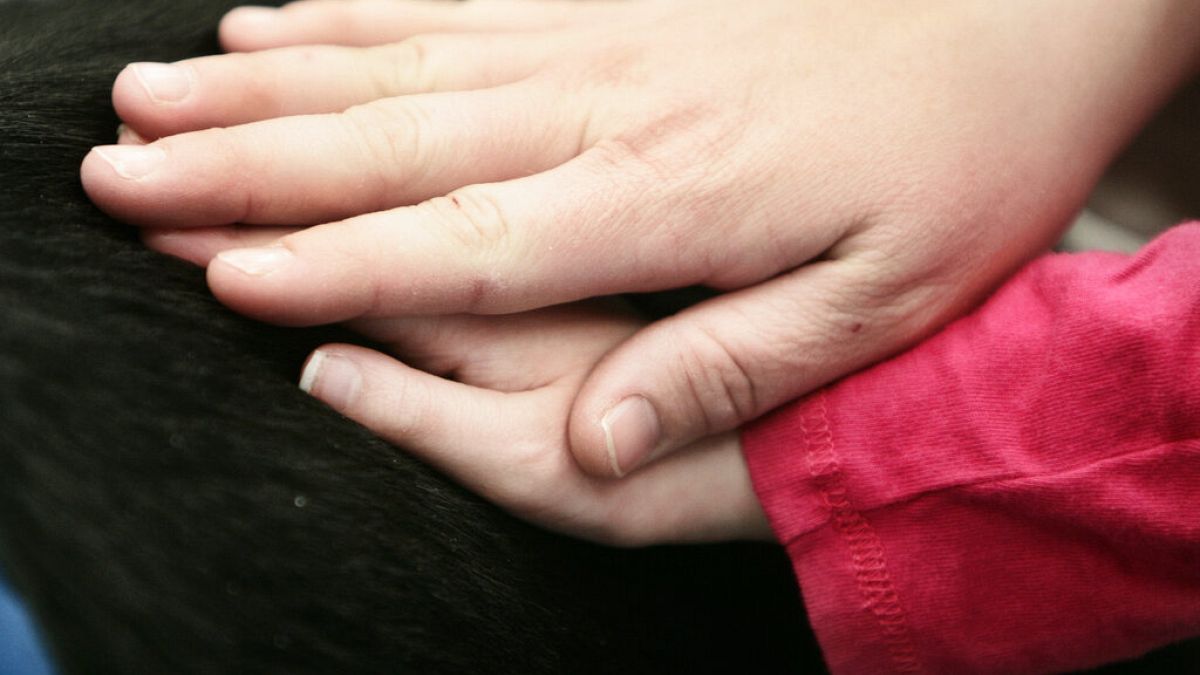World
As more women forgo the hijab, Iran’s government pushes back

TEHRAN, Iran (AP) — Billboards across Iran’s capital proclaim that women should wear their mandatory headscarves to honor their mothers. But perhaps for the first time since the chaotic days following Iran’s 1979 Islamic Revolution, more women — both young and old — choose not to do so.
Such open defiance comes after months of protests over the September death of 22-year-old Mahsa Amini in the custody of the country’s morality police, for wearing her hijab too loosely. While the demonstrations appear to have cooled, the choice by some women not to cover their hair in public poses a new challenge to the country’s theocracy. The women’s pushback also lays bare schisms in Iran that had been veiled for decades.
Authorities have made legal threats and closed down some businesses serving women not wearing the hijab. Police and volunteers issue verbal warnings in subways, airports and other public places. Text messages have targeted drivers who had women without head covering in their vehicles.
However, analysts in Iran warn that the government could reignite dissent if it pushes too hard. The protests erupted at a difficult time for the Islamic Republic, currently struggling with economic woes brought on by its standoff with the West over its rapidly advancing nuclear program.
Some women said they’ve had enough — no matter the consequence. They say they are fighting for more freedom in Iran and a better future for their daughters.
Some suggested the growing numbers of women joining their ranks might make it harder for the authorities to push back.
“Do they want to close down all businesses?” said Shervin, a 23-year-old student whose short, choppy hair swayed in the wind on a recent day in Tehran. “If I go to a police station, will they shut it down too?”
Still, they worry about risk. The women interviewed only provided their first names, for fear of repercussions.
Vida, 29, said a decision by her and two of her friends to no longer cover their hair in public is about more than headscarves.
“This is a message for the government, leave us alone,” she said.
Iran and neighboring Taliban-controlled Afghanistan are the only countries where the hijab remains mandatory for women. Before protests erupted in September, it was rare to see women without headscarves, though some occasionally let their hijab fall to their shoulders. Today, it’s routine in some areas of Tehran to see women without headscarves.
For observant Muslim women, the head covering is a sign of piety before God and modesty in front of men outside their families. In Iran, the hijab — and the all-encompassing black chador worn by some — has long been a political symbol as well.
Iran’s ruler Reza Shah Pahlavi in 1936 banned the hijab as part of his efforts to mirror the West. The ban ended five years later when his son, Shah Mohammad Reza Pahlavi, took over. Still, many middle and upper-class Iranian women chose not to wear the hijab.
By the 1979 Islamic Revolution, some of the women who helped overthrow the shah embraced the chador, a cloak that covers the body from head to toe, except for the face. Images of armed women encompassed in black cloth became a familiar sight for Americans during the U.S. Embassy takeover and hostage crisis later that year. But other women protested a decision by Grand Ayatollah Ruhollah Khomeini ordering the hijab to be worn in public. In 1983, it became the law, enforced with penalties including fines and two months in prison.
Forty years later, women in central and northern Tehran can be seen daily without headscarves. While at first Iran’s government avoided a direct confrontation over the issue, it has increasingly flexed the powers of the state in recent weeks in an attempt to curb the practice .
In early April, Iran’s Supreme Leader Ayatollah Ali Khamenei declared that “removing hijab is not Islamically or politically permissible.”
Khamenei claimed women refusing to wear the hijab are being manipulated. “They are unaware of who is behind this policy of removing and fighting hijab,” Khamenei said. “The enemy’s spies and the enemy’s spy agencies are pursuing this matter. If they know about this, they will definitely not take part in this.”
Hard-line media began publishing details of “immoral” situations in shopping malls, showing women without the hijab. On April 25, authorities closed the 23-story Opal shopping mall in northern Tehran for several days after women with their hair showing were seen spending time together with men in a bowling alley.
“It is a collective punishment,” said Nodding Kasra, a 32-year-old salesman at a clothing shop in the mall. “They closed a mall with hundreds of workers over some customers’ hair?”
Police have shut down over 2,000 businesses across the country over admitting women not wearing the hijab, including shops, restaurants and even pharmacies, according to the reformist newspaper Shargh.
“This is a lose-lose game for businesses. If they warn (women) about not wearing the hijab as per the authorities’ orders, people will boycott them,” said Mohsen Jalalpour, a former deputy head of Iran’s Chamber of Commerce. “If they refuse to comply, the government will close them down.”
Bijan Ashtari, who writes on Iranian politics, warned that business owners who had remained silent during the Mahsa Amini-inspired protests could now rise up.
Meanwhile, government offices no longer provide services to women not covering their hair, after some had in recent months. The head of the country’s track and field federation, Hashem Siami, resigned this weekend after some participants in an all-women half-marathon in the city of Shiraz competed without the hijab.
There are signs the crackdown could escalate.
Some clerics have urged deploying soldiers, as well as the all-volunteer Basij force of Iran’s paramilitary Revolutionary Guard, to enforce the hijab law. The Guard on Monday reportedly seized an Iranian fishing boat for carrying women not wearing the hijab near Hormuz Island, according to the semiofficial Fars news agency.
Police also say that surveillance cameras with “artificial intelligence” will find women not wearing their head covering. A slick video shared by Iranian media suggested that surveillance footage would be matched against ID photographs, though it’s unclear if such a system is currently operational .
“The fight over the hijab will remain center stage unless the government reaches an understanding with world powers over the nuclear deal and sanctions relief,” said Tehran-based political analyst Ahmad Zeidabadi.
But diplomacy has been stalled and anti-government protests could widen, he said. The hijab “will be the main issue and the fight will not be about scarves only.”
Sorayya, 33, said she is already fighting for a broader goal by going without the headscarf.
“I don’t want my daughter to be under the same ideologic pressures that I and my generation lived through,” she said, while dropping off her 7-year-old daughter at a primary school in central Tehran. “This is for a better future for my daughter.”
___
Gambrell reported from Dubai, United Arab Emirates.

World
Zelenskiy, NATO boss and European leaders discuss Ukraine security guarantees

World
Hamas' Gaza death toll questioned as new report says its led to 'widespread inaccuracies and distortion'

A new report cites a laundry list of alleged errors in the casualty tallies that the Hamas-run Gaza Ministry of Health has issued during the conflict in Gaza, and found that worldwide media widely report the inflated numbers with little or no scrutiny.
The Henry Jackson Society (HJS), a U.K. based think tank, found “widespread inaccuracies and distortion in the data collection process” for the Hamas-run Gaza Ministry of Health (MoH) which has resulted in a “misleading picture of the conflict.” The study also analyzed how journalists worldwide have spread misleading MoH data without noting its shortcomings or offering alternative information from Israeli sources.
The report’s author, Andrew Fox, a fellow at HJS said his team’s research is based on lists of casualty figures that the MoH has released through Telegram as well as lists released by the U.N. Office for the Coordination of Humanitarian Affairs. Fox said he and his team have been able to examine segments of the reporting, despite changeable MoH data being “really hard to interrogate.”
On Tuesday, Gaza health authorities updated its number of dead to what it said was more than 45,000.
ISRAEL TO CLOSE EMBASSY IN IRELAND OVER ‘ANTI-ISRAEL POLICIES’
A man walks past shelter tents erected near collapsed buildings in the Bureij camp for Palestinian refugees in the central Gaza Strip on Oct. 1, 2024. (Eyad Baba/AFP via Getty Images)
The report said the ministry’s reporting long indicated that women and children made up more than half of the war dead, leading to accusations that Israel intentionally kills civilians in Gaza.
“If Israel was killing indiscriminately, you would expect deaths to roughly match the demographic proportions pre-war,” Fox said. At the time, adult men made up around 26% of the Gazan population. “The number of adult males that have died is vastly in excess of 26%,” he said.
Within accessible reporting, Fox and his team also found instances of casualty entries being recorded improperly, “artificially increas[ing] the numbers of women and children who are reported as killed.” This has included people with male names being listed as females, and grown adults being recorded as young children.
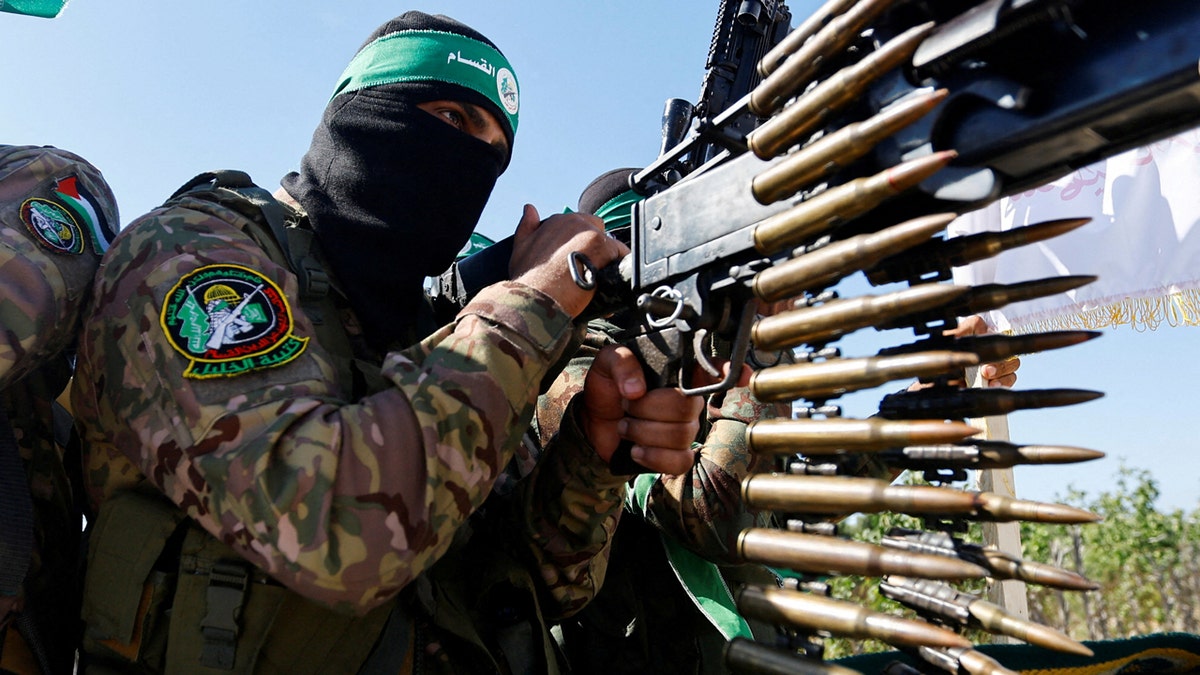
A terrorist from Hamas takes part in a military parade. (Reuters/Ibraheem Abu Mustafa/File Photo)
Analyzing data by category has further highlighted biases within reporting. There are three kinds of entries within MoH’s casualty figures: entries collected by hospitals prior to the breakdown of networks in November 2023, entries submitted by family members of the deceased, and entries collected through “media sources,” whose veracity researchers like Dr. David Adesnik, vice president of research at the Foundation for Defense of Democracies, has previously questioned.
Analysis of gender breakdowns among these groupings shows that hospital records “are distorted,” with a higher percentage of women and children among hospital-reported casualties than in those reported by family members.
UN ACCUSED OF DOWNPLAYING HAMAS TERRORISTS’ USE OF GAZA HOSPITALS AS NEW REPORT IGNORES IMPORTANT DETAILS
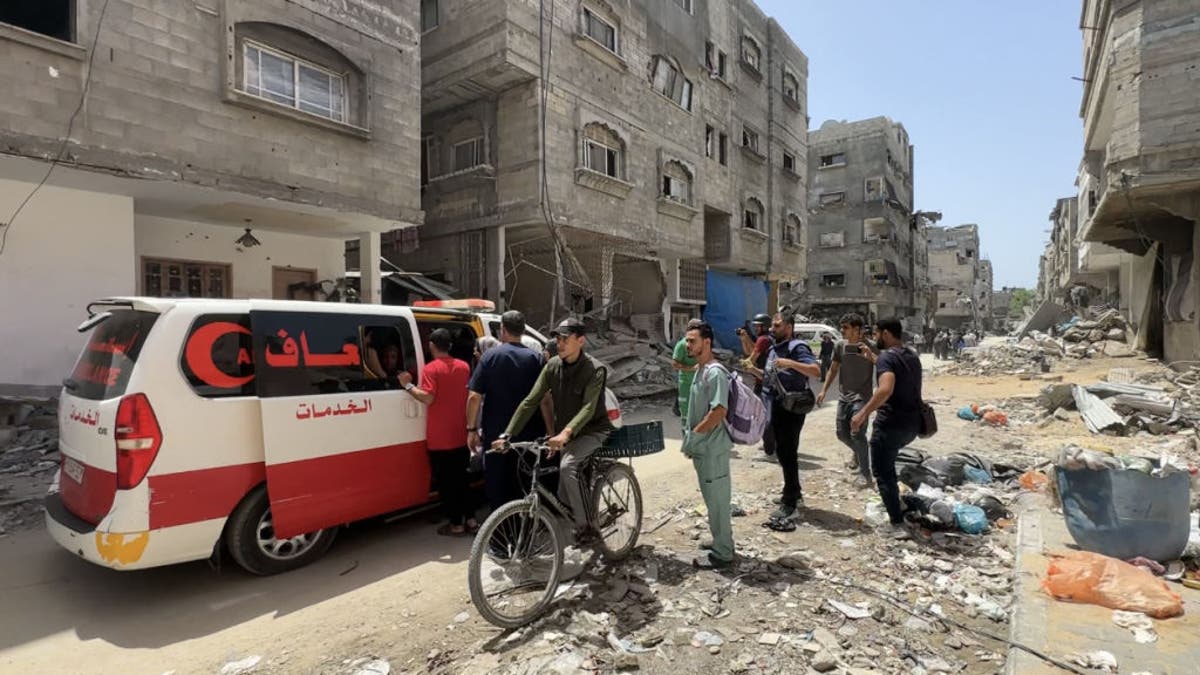
Kamal Adwan hospital’s health team evacuate Palestinian patients after Israeli airstrikes damaged the hospital in Gaza Strip on May 21, 2024. (Karam Hassan/Anadolu via Getty Images)
Though around 5,000 natural deaths typically occur in Gaza each year, the study found that MoH casualty figures do not account for natural deaths. It claims that it also fails to exclude deaths unassociated with Israeli military action from its count. This includes individuals believed to have been killed by Hamas, like 13-year-old Ahmed Shaddad Halmy Brikeh, who appears on a casualty list from August despite reports indicating he had “been shot dead by Hamas” while trying to get food from an aid shipment in December 2023. The list also excludes individuals killed by Hamas’ rockets, about 1,750 of which “fell short within the Gaza strip” between October 2023 and July 2024.
Fox and his team also found individuals who died before the conflict began had been added to MoH casualty counts. In addition, at least three cancer patients whose names were included in lists to leave the Gaza Strip for treatment in April had been listed as dead during the month of March.
RETURN OF TRUMP GIVES FAMILIES OF GAZA HOSTAGES NEW HOPE
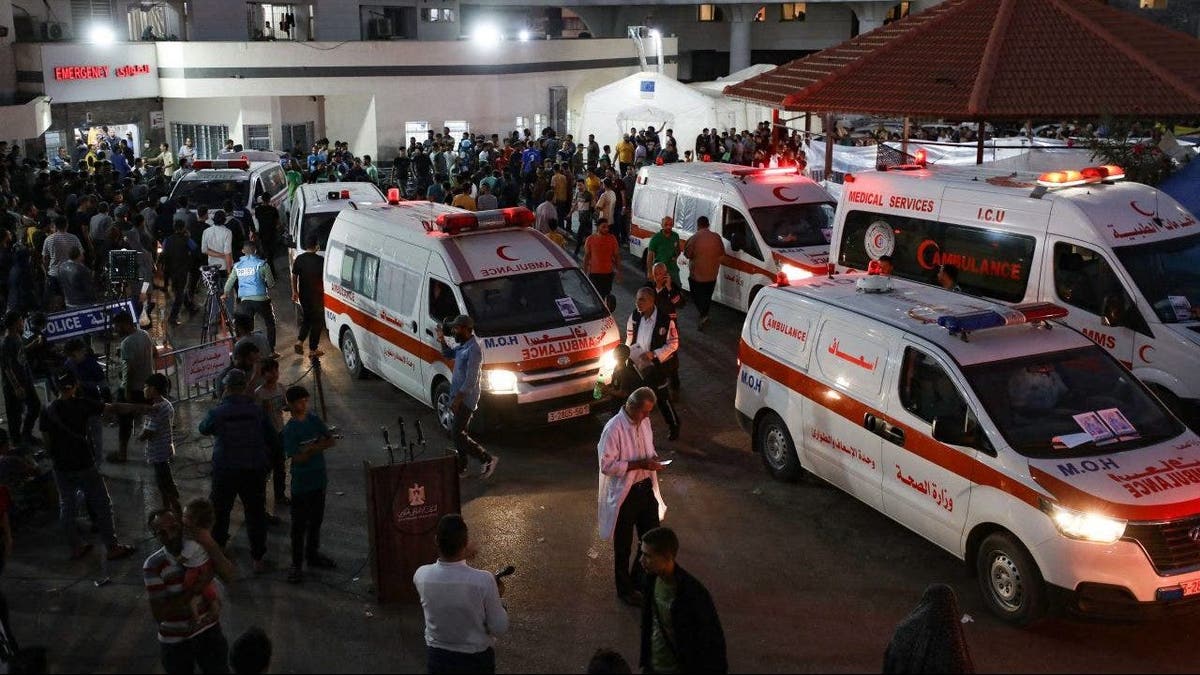
Ambulances carrying victims of Israeli strikes crowd the entrance to the emergency ward of the Al-Shifa hospital in Gaza City on Oct. 15, 2023. (Dawood Nemer/AFP via Getty Images)
The ministry does not separate combatants and civilians in its casualty figures. Though the study states that Israeli forces have killed around 17,000 Hamas terrorists, Fox said that his research indicated the death toll may include as many as 22,000 members of Hamas. He said his research supports the fact that around 15,000 of the dead in Gaza are women and children, and 7,500 are non-combatant adult males.
“Collecting these sorts of lists in a war zone is a hugely challenging thing,” Fox admitted, but he stated that the MoH’s mistakes, whether innocent or deliberate, show that the institution is “really unreliable.”
Despite this unreliability, the Henry Jackson Society’s survey of reporting of the conflict found that 98% of media organizations it looked at utilized fatality data from MoH versus 5% who cited Israeli figures. Fox found that “fewer than one in every 50 articles [about the conflict] mentioned that the figures provided by the MoH were unverifiable or controversial,” though “Israeli statistics had their credibility questioned in half of the few articles that incorporated them.”
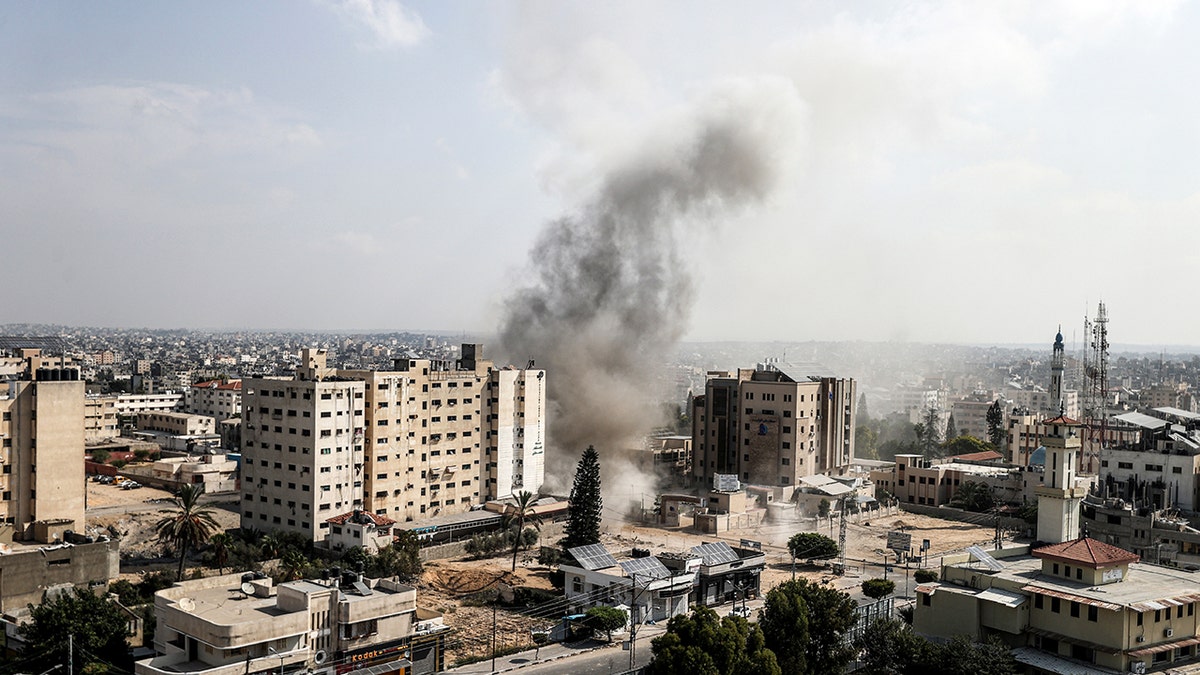
Smoke rises near the al-Wafa hospital from Israeli airstrike in Gaza City on Oct. 24, 2023. (Ali Jadallah/Anadolu via Getty Images)
As an illustration of the phenomenon witnessed in the survey, Fox pointed out what he called an “incredibly biased” article from a British broadcaster that recently emerged citing MoH data claiming that there have been more than 45,000 deaths in Gaza. Though its report mentions MoH data, it does not break down the numbers of combatants and civilians, and does not mention the questionable veracity of MoH reporting. Instead, it parrots MoH claims, reporting that women and children make up for over half of the fatalities.
“It’s just a great example of everything we’ve written in the report,” Fox said.
World
Arson at karaoke bar in Vietnam’s Hanoi kills 11, police say

Vietnam’s Ministry of Public Security says suspected perpetrator confessed to starting blaze after dispute with staff.
A suspected arson attack at a cafe and karaoke bar in Vietnam’s Hanoi has killed 11 people and injured two others, police have said.
Vietnam’s Ministry of Public Security said on Thursday that it had arrested a man who confessed to starting the blaze on the ground floor of the building following a dispute with staff.
Rescue workers who rushed to the scene brought seven people out of the building alive, two of whom were rushed to hospital, police said.
Footage that circulated on social media showed a multistorey building engulfed in flames as firefighters worked at the scene while surrounded by a crowd of onlookers.
“At that time, we saw many people screaming for help but could not approach because the fire spread very quickly, and even with a ladder, we could not climb up,” the Lao Dong newspaper quoted a witness as saying.
The Tien Phong newspaper quoted a witness as saying there was a strong smell of petrol at the scene.
“Everyone shouted for those inside to run outside, but no one called for help,” the witness said.
CCTV footage published by the VnExpress news site appeared to show a man carrying a bucket towards the cafe seconds before the blaze began shortly after 11pm (16:00 GMT) on Wednesday.
Fires are a common hazard in Vietnam’s tightly packed urban centres.
Between 2017 and 2022, 433 people were killed in some 17,000 house fires in the country, most of them in urban areas, according to the Ministry of Public Security.
In September last year, 56 people, including four children, were killed and dozens injured in a fire at an apartment block in Hanoi.
This October, a court in southern Binh Duong province jailed six people, including four police officers, over safety lapses related to a fire at a karaoke complex that killed 32 people in 2022.
-

 Business1 week ago
Business1 week agoOpenAI's controversial Sora is finally launching today. Will it truly disrupt Hollywood?
-

 Politics6 days ago
Politics6 days agoCanadian premier threatens to cut off energy imports to US if Trump imposes tariff on country
-
/cdn.vox-cdn.com/uploads/chorus_asset/file/25782636/247422_ChatGPT_anniversary_CVirginia.jpg)
/cdn.vox-cdn.com/uploads/chorus_asset/file/25782636/247422_ChatGPT_anniversary_CVirginia.jpg) Technology7 days ago
Technology7 days agoInside the launch — and future — of ChatGPT
-
/cdn.vox-cdn.com/uploads/chorus_asset/file/25789444/1258459915.jpg)
/cdn.vox-cdn.com/uploads/chorus_asset/file/25789444/1258459915.jpg) Technology5 days ago
Technology5 days agoOpenAI cofounder Ilya Sutskever says the way AI is built is about to change
-

 Politics5 days ago
Politics5 days agoU.S. Supreme Court will decide if oil industry may sue to block California's zero-emissions goal
-
/cdn.vox-cdn.com/uploads/chorus_asset/file/25546252/STK169_Mark_Zuckerburg_CVIRGINIA_D.jpg)
/cdn.vox-cdn.com/uploads/chorus_asset/file/25546252/STK169_Mark_Zuckerburg_CVIRGINIA_D.jpg) Technology5 days ago
Technology5 days agoMeta asks the US government to block OpenAI’s switch to a for-profit
-

 Politics6 days ago
Politics6 days agoConservative group debuts major ad buy in key senators' states as 'soft appeal' for Hegseth, Gabbard, Patel
-

 Business3 days ago
Business3 days agoFreddie Freeman's World Series walk-off grand slam baseball sells at auction for $1.56 million







